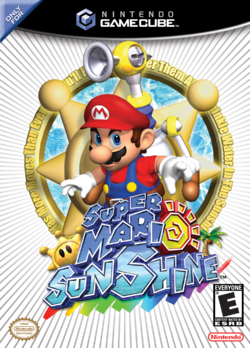 Super Mario Sunshine (Retro)
Super Mario Sunshine (Retro)
User Review
Product Information:
- Release Date (NA): August 26, 2002
- Release Date (EU): October 4, 2002
- Release Date (JP): July 19, 2002
- Publisher: Nintendo
- Developer: Nintendo EAD
- Genres: Platformer.
Game Features:
Review Approach:
Super Mario 64 proved to be a huge hit when it was released in 1996, with it being quickly lauded as one of the greatest games of all time. But after the Italian plumber's main adventure, Mario would only appear in spin-offs for the rest of the N64 era. With games such as Mario Golf, Mario Tennis, Mario Party, and the beloved Paper Mario making their debut during this time. It wouldn't be until Nintendo's next console was released for Mario's 3D adventures to continue. The Nintendo GameCube was released in the year 2001, but unlike the Nintendo 64, there would be no main Mario game released as a launch title. With the spin-off, Luigi's Mansion being the Mario game at launch. And with this in mind, it is important to mention that Super Mario Sunshine was also rushed out the door. And while that usually spells out bad news, Super Mario Sunshine received critical praise when it was released, and it was considered as a worthy successor to Mario 64.
However, perceptions of the game have changed over time, much like Super Mario 64. Super Mario Sunshine is one of the more divisive Mario games, it's a game that you either love or hate.
But regardless of your opinion, it's clear that more people prefer Super Mario 64 in comparison to Super Mario Sunshine today. While Super Mario 64 suffered from its status as a revolutionary title, Super Mario Sunshine suffers more due to its rushed development, with that rushed status becoming quite clear in certain points in the adventure. But just like Super Mario 64, that still does not mean that Super Mario Sunshine can't still offer an enjoyable experience. I found that Super Mario 64 still offered an enjoyable experience today, so can the same be said for Sunshine?
Unlike Super Mario 64, which featured a standard Mario plot. Super Mario Sunshine's plot is something else. Similar to Super Mario World, Mario, Princess Peach, and the new character Toadsworth decide to take a vacation on the tourist paradise that is Isle Delfino. After arriving on the island, Mario and the gang are greeted by a piece of mysterious goop. So after talking with some surprisingly hostile locals, Mario finds a water pump called F.L.U.U.D, who Mario uses to quickly clear out the goop. But celebrations are cut short when Mario is arrested and put on trial, being accused of being the main culprit behind the recent pollution that the island has been suffering as a result of the goop, which has caused the island's main source of energy, the Shine Sprites to disappear. So Mario is now sentenced to clean the entire island. But we know that Mario couldn't have done this, so who did? Well, on the first day of the sentence we are introduced to the true culprit: Shadow Mario. Who makes an attempt to kidnap Peach, but Mario makes short work of him. Shadow Mario then makes a run for it, with Mario giving chase. So now Mario not only has to clear up his name, not only does he need to collect the Shine Sprites to restore the island to its former glory, but he also has to deal with a doppelgänger and defeat him as well.
And just as everything seemed to be going smoothly, Shadow Mario eventually tries to kidnap Peach again and succeeds. With Shadow Mario escaping to Pinna Park, with Mario following suit. And after a confrontation with a robotic version of Bowser, Shadow Mario reveals himself to be Bowser Jr., who also makes his debut on this game. Under the impression that Peach is his mother, Bowser Jr. reveals that the plan was to implicate Mario of the pollution and have him arrested, leaving Peach free for the picking. Bowser Jr. then escapes to Corona Mountain. With no other choice but to continue his sentence, Mario eventually makes his way to Corona Mountain, in which he confronts Bowser himself on his giant bathtub in the sky. Mario defeats Bowser, rescues the Princess, and restores Isle Delfino to its former glory.
Here's your true goal, restore the Shine Gate to its former self.
Overall, this plot is incredibly stupid, but I consider it to be so bad that it's good. This is also due to how god awful the voice acting is, yes voice acting in a Mario game. And it sounds as bad as you think. But I would consider these performances on the same level as Star Fox 64 and Symphony of the Night, they're just ironically enjoyable. And the plot still offers a fresh experience on a series known for its formulaic plots, and it also succeeds in providing the player with a clear objective so this plot gets the job done. But I'm glad this did not become the standard for future Mario games.
With the plot out of the way, how does Super Mario Sunshine fare in regards to graphics and sounds? Simply put, Super Mario Sunshine is one of the best-looking games on the Nintendo GameCube, as well as a significant upgrade from Super Mario 64. Nintendo EAD effectively took advantage of the GameCube's capabilities to create great-looking locales, with the water graphics, in particular, standing out as some of the best out of the 6th generation. The character models are where the biggest improvement can be seen from Super Mario 64. All of the character models look great and have a closer resemblance to the game's artwork. Which is more than can be said of Super Mario 64. Granted, the visuals in Super Mario 64 were among the first 3D graphics that Nintendo ever worked on, so the fact that they don't hold up well is excusable. But the main point is that Super Mario Sunshine shows how much Nintendo EAD has learned over the years, delivering visuals that still look great today.
Regarding the game's visual. Super Mario Sunshine goes for a tropical theme. Which does lead to some limited level aesthetics, especially compared to Super Mario 64. But this is not a bad thing, seeing as the limited theming gives Super Mario Sunshine a look that is completely it's own. And the tropical theming is explored quite well in the game's levels, Ricco Harbor is a commercial port, Pinna Park is an amusement park, and Delfino Plaza is a tourist center. All of these examples fit perfectly around the tropical island theme and make Isle Delfino a memorable locale. Complementing the great visuals, we have the soundtrack composed by Koji Kondo. While Super Mario 64's soundtrack offered the overall more memorable and catchy listen, Super Mario Sunshine's soundtrack still offers a great listen. The soundtrack effectively delivers the tropical feel that the visuals demand, while still being varied enough to not blend in together. Some of the standouts include Ricco Harbor, the Secret Levels, and Delfino Plaza.
Here's yet another reference to a Dolphin.
Now that Nintendo EAD successfully created a working formula with Super Mario 64, how well does Super Mario Sunshine improve on that initial foundation? The controls of Super Mario Sunshine are some of the best in the Mario series. As someone who has yet to play Super Mario Odyssey, I consider Super Mario Sunshine controls to be the best in the 3D Mario games, being superior to Super Mario 64 as well as the Super Mario Galaxy games by a long shot. The GameCube controller is used excellently here, with almost every part of the controller (minus the d-pad) being used effectively. The move set is not that much different from Super Mario 64, but certain moves have been removed. Including all of the punching and kicking attacks, and the long jump. But Super Mario Sunshine also adds a major component to the gameplay, and that is F.L.U.U.D. This little machine is a great extension to Mario's move set, allowing for many platforming opportunities. F.L.U.U.D has two modes by default, which can be toggled by pressing the X button. The default mode is just a standard water hose, allowing Mario to clear up some of the goop as well as being the main method to kill certain enemies and even some boss battles. The Hovering nozzle allows you to briefly hover over the air in order to save yourself from certain falls, reach further distances, as well as taking some shortcuts. The Hovering nozzle alone makes F.L.U.U.D loads of fun to use and is one of the main reasons why Super Mario Sunshine's controls are so great. But besides those two modes, F.L.U.U.D also has another two additional nozzles, effectively replacing the caps of Super Mario 64. These nozzles can be found on certain boxes scattered around the levels as well as the hub world.
The other two nozzles are the Turbo and Rocket nozzles. The Turbo nozzle transforms F.L.U.D.D into a propeller, allowing Mario to move incredibly fast both on land and water. While the Rocket nozzle shoots Mario straight up into the air, allowing him to reach heights that were not possible before. And while the nozzles are more interesting and useful than the three caps from Mario 64, the nozzles are still as situational as the caps were. Because the Hover nozzle is just more useful than the other two nozzles, there's no real incentive to use the other two nozzles outside of the parts in which they are required. But as I already mentioned in my Super Mario 64 review, the core gameplay is fun and varied enough for it to be able to carry the entire experience, even more so with F.L.U.U.D. So the Turbo and Rocket nozzles are only there to add mechanical variety, so I don't mind the fact that they are situational.
Another improvement made to Super Mario 64's controls is the wall jumping. Now when Mario touches a wall, he slides on the wall for a bit, allowing you to press the A button to jump from the wall. This change makes the wall jump way more simple to execute, and it becomes more useful as a result. And this change has become a mainstay in future Mario games, proving just how useful the wall jumping became thanks to the slide. But by far, the biggest improvement to the controls is without a doubt: the camera. Thanks to the GameCube's C-Stick, Super Mario Sunshine features a full 360° continuous camera control. This gives you the freedom to set up any camera angle that may be useful to your current environment, and while the camera can still get stuck on level geometry, this is fixed thanks to a specific addition. Similar to The Legend of Zelda: Ocarina of Time, pressing the L button automatically makes the camera center to Mario's back, allowing you to correct your view. This simple addition makes the camera getting stuck a non-issue, and that by default makes it a big improvement from Super Mario 64. Just keep in mind that the camera controls are once again inverted, so they do take some time to get used to.
The controls benefit a lot from the GameCube controller's extra buttons.
But nothing is perfect, so let's talk about a few complaints I have with these controls. The swimming controls have been over-simplified from Super Mario 64, which had great swimming controls to begin with. In Super Mario Sunshine, you need to press the B button to swim downwards and the A button to swim upwards while using the left stick to move Mario around. These controls work, but they are incredibly awkward and restrictive, on a game that takes place on a tropical island no less. And on certain underwater sections, you don't get to swim at all, these sections instead force you to use F.L.U.D.D's Hover nozzle to navigate the level. The problem with that is the fact that the Hover nozzle uses a tank control scheme to avoid players from abusing the mechanic. While this is fine for the regular levels, it does not work as well for these underwater sections since there is no way to make Mario go downwards quickly, requiring you to wait for Mario to slowly descend to the desired location. Not to mention that the controls are incredibly stiff, but since you have to deal with this in only three shines, these sections are passable. But by far, the biggest problem when it comes to the controls is the mud boats/leaf sections. To control these platforms, you need to shoot water with F.L.U.D.D in a specific direction, which will make it move in the opposite direction. If you shoot water to the left, the ship will turn to the right, and if you shoot water to the back the platform will move to the front. Sounds simple in theory, but in practice, the platform is pretty inconsistent in its movement. And to control these platforms efficiently, you need to have the utmost patience. The areas where these platforms become problematic are on Corona Mountain and the Poison River. But on the whole, the controls are excellent and still fun to pick up and play today. It would not be until Super Mario Odyssey for a 3D Mario to come even close to Super Mario Sunshine's freedom of control.
Does the same level of improvement to the controls apply to the level design? Right off the bat, Super Mario Sunshine simplifies a lot of when it comes to the game progression. This is shown by the fact that Super Mario Sunshine has fewer levels than Super Mario 64. We went from 15 levels to 7 levels. This is by far the smallest number of levels in a Mario game. And even then, the game still has a total of 120 shines to collect, so how did Nintendo EAD manage to squeeze that amount of shines into the game? Each of the 7 levels has a total of 11 shines to collect, as opposed to the 7 stars per level in Super Mario 64. All of the levels follow the same formula, for the first 6 shines you're trying to fix whatever problems Shadow Mario caused, while on the 7th shine you face off against Shadow Mario himself. The 8th shine is an optional mission, showing how Mario restored the level to its former glory. Each level also contains at least a secret level that is best compared to the castle secret stars in Super Mario 64. These levels all share a similar aesthetic that has almost nothing to do with the rest of the game, and all of them are linear obstacle courses that you have to complete without using F.L.U.D.D And should you return to the level, you can find a switch that spawns 8 red coins, you need to grab them during a time limit and you can use F.L.U.D.D this time. The 8 red coin challenges are just filler shines that don't particularly add a lot to the game, since we are just revisiting the level without a decent amount of change to the original objective. Another type of filler shine is just some randomly hidden shines on the levels that require you to execute pretty obscure actions. These filler shines are a clear reflection of the game's rushed development, and while they are not awful, they're incredibly boring to collect.
As for the construction of the levels themselves, these are a clear improvement over Super Mario 64. Even though Super Mario 64 had a great number of open-ended levels that were fun to travel trough, stages like Rainbow Ride and Tick, Tock Clock felt incredibly out of place. In Super Mario Sunshine, all of the levels are open-ended and follow the example set by stages like Whomp's Fortress pretty well. The best example of this is Ricco Harbor, which features a lot of routes you can take in order to arrive at your desired destination. All of the levels also show how much more mundane locations can still offer great platforming material for a Mario game. Take Sirena Beach, for example, the Hotel is practically a maze that is tied together beautifully, with its navigation feeling incredibly natural for a Mario game, and the Hotel setting also fits surprisingly well to the maze structure. But even if the levels are open-ended, the stage progression is not.
In Super Mario 64, almost all of the stars from a level were available which allowed for tons of freedom when it came to how exactly you're going to progress. But in Super Mario Sunshine, you must specifically choose a shine sprite in order to collect it, with only certain secret shines being the other possible alternatives. So while in Bomb-Omb Battlefield you could ignore the boss fight against King Bomb-Omb in favor of freeing a Chain-Chomp, in Bianco Hills you must defeat the first Polluted Piranha before you can begin the next mission.
You want to do the 8 red coins? Choose its specific shine.
The amount of freedom that Super Mario 64 offered just added a lot of replay value to the experience, but this change in structure makes it so that you must always follow the same route. And while there is still some room for experimentation in the game, this does make Super Mario Sunshine's replay value pale in comparison to its predecessor. And this change in structure also affects the last secret shine that all of the levels share, the returning 100 coin shine. Almost all of the problems that the 100 coin stars had in Super Mario 64 carry over here, but they are much worse in Super Mario Sunshine. Now that the level changes depending on the specific shine you choose, this means that you may or may not have selected a shine that even has enough coins to collect, and these shines now have a predetermined location instead of appearing right above Mario. This change is good since it means that shine will always be accessible, but this shine now also kicks you out of the level meaning that you cannot finish this shine as well as another shine at the same time, unlike Super Mario 64. And once again, it depends on the level of whether or not the experience is going to be enjoyable.
But besides those shines, the hub world Delfino Plaza has plenty of shines to collect, being this game's equivalent to the castle secret stars in Super Mario 64. Most of these shine sprites require the use of the different F.L.U.D.D nozzles, as well as basic exploration. There is even a 100 coin shine in the hub world, which makes Delfino Plaza offer more content in comparison to Peach's castle, making Delfino Plaza a better hub world overall. Another addition to the gameplay is the introduction of Yoshi, who was nothing more than a cameo in the last game. In order to use Yoshi, you need to bring him a specific fruit that he likes, which can be found in various locations. Yoshi is basically a glorified version of F.L.U.D.D since he can shoot out some sort of weird juice that can do everything that the regular F.L.U.D.D nozzle can, including cleaning certain types of gel-like goop. Yoshi can also use his typical flutter jump as well. But Yoshi feels incredibly slippery, making some tight platforming difficult, and using Yoshi is still nowhere near as fun as just using Mario with any of the F.L.U.D.D nozzles, making Yoshi only useful for the shines and collectibles that require him.
So there are 77 shines that can be collected on the 7 main levels, so let's talk about the secret shine sprites. There is a total of 19 secret shines, one can be found by beating Corona Mountain, so the other 18 shines are found in Delfino Plaza. There are two types of these shines, the ones that can be collected on Delfino Plaza itself, and the ones that require you to find their entrance located on a certain part of Delfino Plaza. The first type of shines are pretty easy to obtain with basic exploration, and most of them require the use of a F.L.U.D.D nozzle. As an example, there are three shines that require to clean a specific object, bells for two of them, and the giant shine sprite located at the shine gate for the third. You need to use the Rocket nozzle to reach them, and then use the regular F.L.U.D.D nozzle to clean them. These are simple shines that contribute to the aforementioned content that Delfino Plaza offers. The second type of secret shines is another story. To access these shines, you must find their hidden entrances, then you are teleported to the level itself. For the most part, entering the levels is not hard at all, but the levels do vary in terms of difficulty. The secret level that requires you to use the turbo nozzle offers a good challenge, testing your reflexes in some pretty tight jumps. While the secret level that requires you to collect 8 red coins on a grassy field is pretty easy if you only set the camera on an overhead angle. But most of these levels are fine, with two notable exceptions.
Most of these levels are fun to play, but not many are challenging.
The Pachinko Game is a luck-based mess. For those unfamiliar, Pachinko is the Japanese equivalent to pinball, and if there is anything that these two games share in common is how much they are based on dumb luck. And that is perfectly reflected on this shine, which is filled with lots of invisible walls and awkward collision detection. Making it a frustrating mess. But even this level pales in comparison to the Poison River. Even if the Pachinko shine sucks, at least it is pretty easy to access. The Poison River, on the other hand, it's a chore to even get to the level. You need to navigate with Yoshi to an island that is completely separated from the rest of Delfino Plaza to remove the goop that is blocking the entrance. This simple concept is made worse not only by Yoshi's slippery controls, not only because Yoshi has an invisible time limit that requires him to constantly eat a fruit, not only because Yoshi instantly dies when he touches water, but also because you need to carefully jump from moving boat to moving boat and patiently wait for the boats to slowly move. With patience, you can get to the level in one try, but it does not change the fact that this process is tedious and boring. Now we can finally talk about the level itself, which consists of controlling a leaf with the same awful controls as the mud boat mentioned earlier. But this is made worse by the fact that you have no control over the speed of the leaf, making it easy to miss one of the 8 red coins, and since it is a poison river, you die the moment Mario touches the water. And whatever you do, DO NOT ENTER THE PIPE LOCATED AT THE END OF THE LEVEL. You may think it will be a convenient shortcut that takes you back to the start of the level, but in actuality, the pipe transports you back to Delfino Plaza, so you need to repeat the same tedious commute on the boats to enter the level again. The Poison River is without a doubt, the worst level in the game.
But those two shines are, fortunately, the worst it gets. So Super Mario Sunshine still offers a satisfying experience on the whole when it comes to the regular shine sprites. But if you do the math, you'll realize that the 77 shines that are available in the levels combined with the 19 secret shine sprites only add up to 96 out of the total 120 shine sprites in the game. So how do you collect the final 24 shines? That's where the Blue Coins come in. Hidden close to the entrance to Ricco Harbor is a secret shop run by two raccoons that sell shine sprites, how exactly can they sell these shine sprites without consequence while Mario gets sentenced for allegedly scaring the shine sprites away with the goop is beyond me. Regardless of that plot hole, the last 24 shine sprites can be obtained from this shop. What's the catch? The raccoons will only sell these shine sprites in exchange for 10 blue coins per shine sprite. Making for a total of 240 blue coins to collect, with 30 being found in each of the 7 main levels, 20 in Delfino Plaza, and 10 in Corona Mountain. Right of the bat, its worth mentioning that the Blue Coins are one of the more infamous aspects of Super Mario Sunshine, with many people outright despising this side quest. So what is the big deal with the Blue Coins in the first place?
How are these guys never arrested?
Let's start with the 30 blue coins found in the main 7 levels. These coins are scattered around the levels, with some visible, some hidden, some that require Yoshi or a F.L.U.D.D nozzle, and some that only appear in specific missions. Most of the Blue coins in many of the levels are accessible on the 8th episode of each level, with the very few that are found on specific missions being very obvious. For example, on Sirena Beach there's only two shines where you enter the hotel's casino, so it makes sense that some blue coins are going to be accessible on those sub-areas. But some of the episode-exclusive blue coins are also made obvious by taking a look at the environment. In Pianta Village for example, there is a episode in which the entire level is covered in lava-like goop. So it makes sense to check if anything is hidden beneath all of the goop, especially since this is the only episode in which that happens. Not to mention, most of the hidden blue coins can be found by just spraying water at something that looks suspicious. But some blue coins can be considered obscure, requiring you to check a guide to find them. For example, how are you supposed to know that you can get a blue coin in Pianta Village by ground pounding into a Pianta Statue's nose while the level is at night? But another reason why you would find yourself checking into a guide is because there is no way to keep track of what blue coins you have collected or not, so you have to memorize all of the level's 30 blue coins just to remember what you have collected or not. But in general, the blue coins are the closest Super Mario Sunshine gets to Super Mario 64's level of freedom. Since you can experiment in which order you are going to collect the blue coins as well as how you are going to get them. This is the same kind of freedom I enjoyed a lot on Super Mario 64, making the blue coins one of my favorite aspects of the game. You simply are not going to find this level of freedom from any other collectible in the game, and since you are not kicked out of the level when you get a blue coin, you can get most of them in a single run.
Most of the things mentioned for the blue coins in the main 7 levels also apply to the 20 blue coins in Delfino Plaza, with the same freedom to collect them in any order in any route being helped by Delfino Plaza's decent size. And the Blue Coins are probably at their best here. Since there's only so many places to look for the blue coins, as well as the fact that Delfino Plaza is just fun to explore on its own. But the same cannot be said for the last 10 blue coins in Corona Mountain. These blue coins are the most tedious to collect, since the majority of them require you to use the lovely mud boat controls just to be able to collect them. In fact, the Blue Coins are one of the main reasons why the Corona Mountain section of the mud boat is the worst mud boat section in the game, and that is impressive considering that these sections were already terrible to begin with. But besides those last 10 blue coins, the Blue Coin side-quest is a flawed but otherwise enjoyable experience. And even if they were not enjoyable, the blue coins are completely optional, so you can skip them if you want to.
But what do you exactly get by completing the game 100%? A postcard that appears after the credits, that's it. But why mention this fact? Well, many people take offense to the fact that you do not get a good reward for getting all of the 120 shine sprites. Mainly due to how many people did not enjoy the experience, which is certainly an interesting point. Before we talk about this point, it is worth mentioning that Super Mario 64's 100% completion reward was not that great to begin with. What was that reward? 100 lives and a small message delivered by Yoshi on behalf of Nintendo EAD. While this is nice, its a useless reward since you have done everything in the game. So why is Super Mario Sunshine's lackluster reward hated more than Super Mario 64's? Because more people enjoyed playing trough Super Mario 64 on its own compared to Super Mario Sunshine. These two games definitely offer a more intrinsic reward, meaning that the fun that you get from just playing the game is the reward itself. And that's actually pretty standard for many 3D platformers. And let's remember that some 2D Mario games don't offer the greatest rewards for completing them 100%. Just look at Super Mario World, you get a message calling you a Super Player and a palette swap. So if you do not enjoy Super Mario Sunshine, then you won't get anything for beating the game 100%, but if you do enjoy the game then the 100% experience is going to be great for you. So whether or not is the 100% experience worth it depends on the enjoyment you have with the game.
This is your extrinsic reward, so keep that in mind.
Considering that the boss fights in Super Mario 64 were not that great, how does Super Mario Sunshine fare in comparison? On the whole, they are a step in the right direction that do still suffer from some problems. The variety in Super Mario 64's bosses was lacking, seeing as you fought Big Boo and Big Bully three times each, not to mention how generic those characters are. The unique bosses were so easy that they practically beat themselves, while the Bowser fights were just as easy and in the case of the third encounter, terrible. Unfortunately, Super Mario Sunshine's variety of bosses is not that much better. You fight two bosses, Polluted Piranhas five times, and Gooper Bloopers three times, and they both don't require that much strategy. Gooper Blooper is the same exact thing, just pull his mouth while avoiding his tentacles two times and you're done. While Polluted Piranhas encounters only different in hit count and the number of harmless enemies they spawn, but you're still just waiting for the Polluted Piranha to open his mouth so you can shoot water at him.
But besides those two, all of the bosses are pretty unique and offer a better challenge than all of Super Mario 64's bosses combined. Petey Piranha is a new character that is encountered two times, with the second time adding enough new obstacles to not make the fights the same thing. King Boo requires you to shoot water at his tongue so he can spin a slot machine that must end on three pineapples, then grab a jalapeño and make him eat and burn his tongue, and throw a fruit at him to attack him. Phantamanta is a silhouette of a manta ray that eletrocutes you on touch, you need to shoot water at him to make him split into two Phantamantas, repeat the process until you eliminated every single Phantamanta. And the best boss fight in the game is Mecha Bowser, who requires Mario to ride a roller coaster and shoot projectiles at Mecha Bowser while avoiding the bullet bills he shoots at you. Bowser himself is a lot better as well, requiring you to effectively make use of the rocket nozzle to destroy five targets while also avoiding bullet bills and his fire attacks. These bosses not only are way more unique, but also a lot more fun to encounter, with only Gooper Bloopers and Polluted Piranhas being as bad as most of the bosses from the last game.
Super Mario Sunshine stands out as one of the weirdest and most unique Mario games to date. With many of its head-scratching changes adding a lot to the game's charm and personality. And this becomes especially more apparent today, seeing as the Mario franchise got more and more generic as time went on. With games like the New. Super Mario Bros. series showing just how homogenized Mario games were starting to become. And it would not be until Super Mario Odyssey that a unique and weird out of left field experience would be released. And even in a post-Super Mario Odyssey age, Super Mario Sunshine is still a breath of fresh air today. And seeing the big improvements made to the graphics, the controls, and the more consistent level design, Super Mario Sunshine is in a lot of ways better than its predecessor. But Super Mario Sunshine also marks a significant point in the 3D Mario series, showing how the series got more and more linear and how the freedom found in Super Mario 64 became less of a factor. There is certainly a lot of weird aspects when it comes to the game's structure, such as all of the unnecessary filler shines as well as the more restrictive structure. And some of Super Mario 64's replay value is lost as a result. And it becomes quite clear how the game suffers from a lot of content in too small of a space, most likely as a consequence of the game's rushed development. Why there needed to be 11 shines on each level? Why we only got 7 levels? Why is there so much filler? When we take those facts into account, the game's divisive legacy starts to make sense. There are just too many flaws that were not there previously, and while this is an evolution of Super Mario 64's gameplay, it is up to preference whether or not was this a change for the best. And while I do enjoy Super Mario Sunshine a lot, its inconsistencies just make it an inferior product to Super Mario 64 overall.
The improved controls, the more focused vision of the levels, F.L.U.D.D, the improvements in the presentation (the plot does not count), and the boss fights are a clear improvement from the last game. But the flawed structure just holds the game back and is simply not something we should expect from a sequel. In a way, this game reminds me a lot of Sonic CD, a game that once was widely beloved that would develop a mixed legacy later on, while also being a mess compared to previous and later installments. But this does not change the fact that Super Mario Sunshine is at the end of the day a good game. And while I still prefer Super Mario 64 as well as future 3D Mario games, I can still recommend Super Mario Sunshine as a fresh, unique, and quality platformer that fans of 3D platformers should check out.
Verdict
- Great presentation.
- Near perfect controls.
- Consistent level design.
- Improved boss fights.
- Messy and restrictive structure.
- Too much filler content.
- No hint list for Blue Coins.
- Hilariously bad plot.
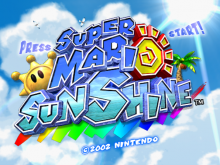
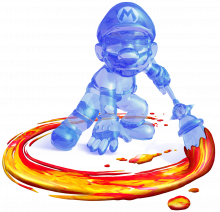
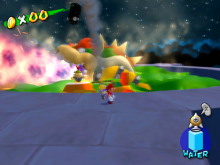
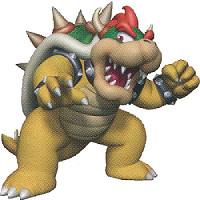
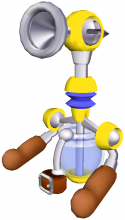
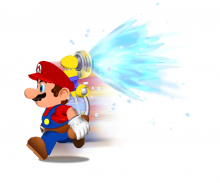
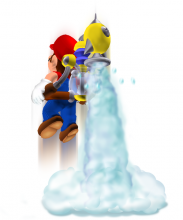

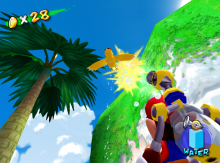

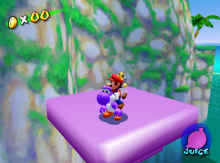
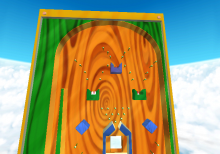
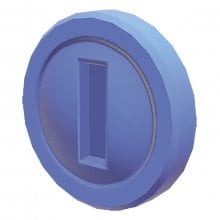
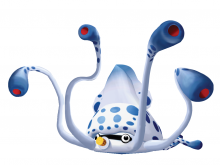
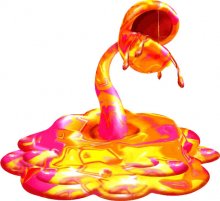
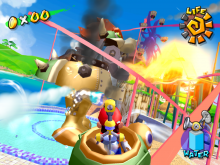
Reviews
Rauniot
Step into post-apocalyptic Northern Finland in Rauniot, Act Normal Game’s debut point-and-click title. Let’s click away!
Broken Roads
Australia-based indie developer Drop Bear Bytes’ debut title, Broken Roads, launches today on PC and consoles. Does this new cRPG have what it takes to stand toe-to-toe to its contemporaries?
Ereban: Shadow Legacy
Ereban: Shadow Legacy is Baby Robot Games’ debut title that merges classic stealth mechanics with a fast-paced ability to merge with shadows. Should you allow it to sneak into your PC gaming library?
South Park: Snow Day!
South Park is back in the gaming sphere with the followup to Obsidian’s hit duo of RPGs, South Park: Snow Day!
Dragon's Dogma 2
Capcom’s latest JRPG, Dragon’s Dogma 2, takes you on a mediaeval fantasy adventure as The Chosen One. Should you take on this quest?
Site & Scene News
New Hot Discussed
Delta emulator now available on the App Store for iOS
Review Rauniot
Pimax reveals new range of VR headsets and accessories
'Grounded: Fully Yoked Edition' launches on Nintendo Switch, PS4 and PS5
Nintendo "Indie World" stream announced for April 17th, 2024
DLC-sized mod "Fallout: London" delayed ahead of Fallout 4's next-gen update
Rumor Keanu Reeves is reportedly voicing Shadow in Sonic the Hedgehog 3
Two more classic NES titles join the list of fan-made SNES ports
Nintendo Switch port of 'One Piece Odyssey' gets release date
'Sand Land' gets new Sandstorm trailer
Nintendo Switch firmware 18.0.0 has been released
GitLab has taken down the Suyu Nintendo Switch emulator
Atmosphere CFW for Switch updated to pre-release version 1.7.0, adds support for firmware 18.0.0
Wii U and 3DS online services shutting down today, but Pretendo is here to save the day
Denuvo unveils new technology "TraceMark" aimed to watermark and easily trace leaked games
GBAtemp Exclusive Introducing tempBOT AI - your new virtual GBAtemp companion and aide (April Fools)
Pokemon fangame hosting website "Relic Castle" taken down by The Pokemon Company
MisterFPGA has been updated to include an official release for its Nintendo 64 core
Apple is being sued for antitrust violations by the Department of Justice of the US
The first retro emulator hits Apple's App Store, but you should probably avoid it
Nintendo Switch firmware 18.0.0 has been released
Wii U and 3DS online services shutting down today, but Pretendo is here to save the day
GBAtemp Exclusive Introducing tempBOT AI - your new virtual GBAtemp companion and aide (April Fools)
GitLab has taken down the Suyu Nintendo Switch emulator
Denuvo unveils new technology "TraceMark" aimed to watermark and easily trace leaked games
The first retro emulator hits Apple's App Store, but you should probably avoid it
Atmosphere CFW for Switch updated to pre-release version 1.7.0, adds support for firmware 18.0.0
Apple is being sued for antitrust violations by the Department of Justice of the US
Delta emulator now available on the App Store for iOS
Pokemon fangame hosting website "Relic Castle" taken down by The Pokemon Company